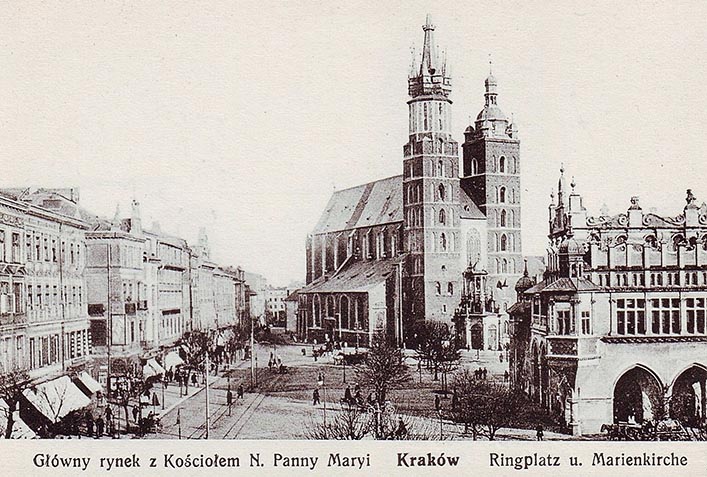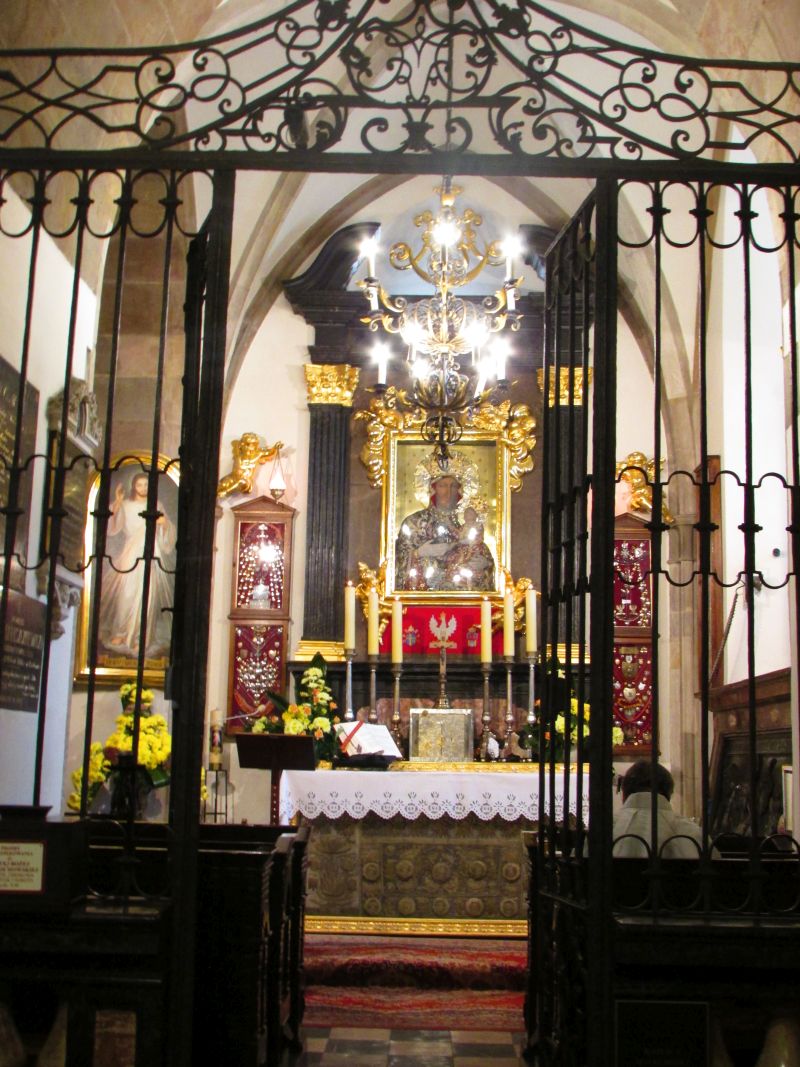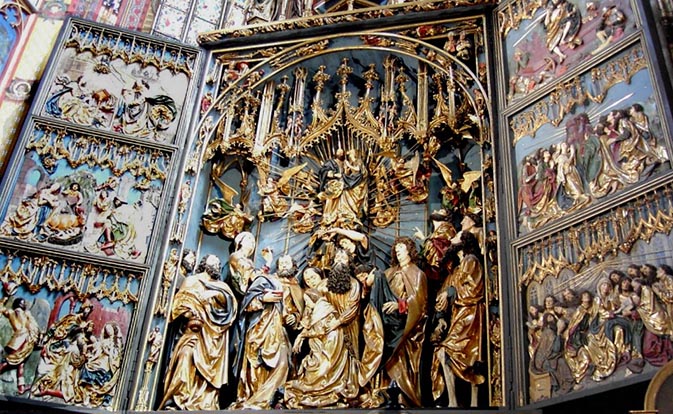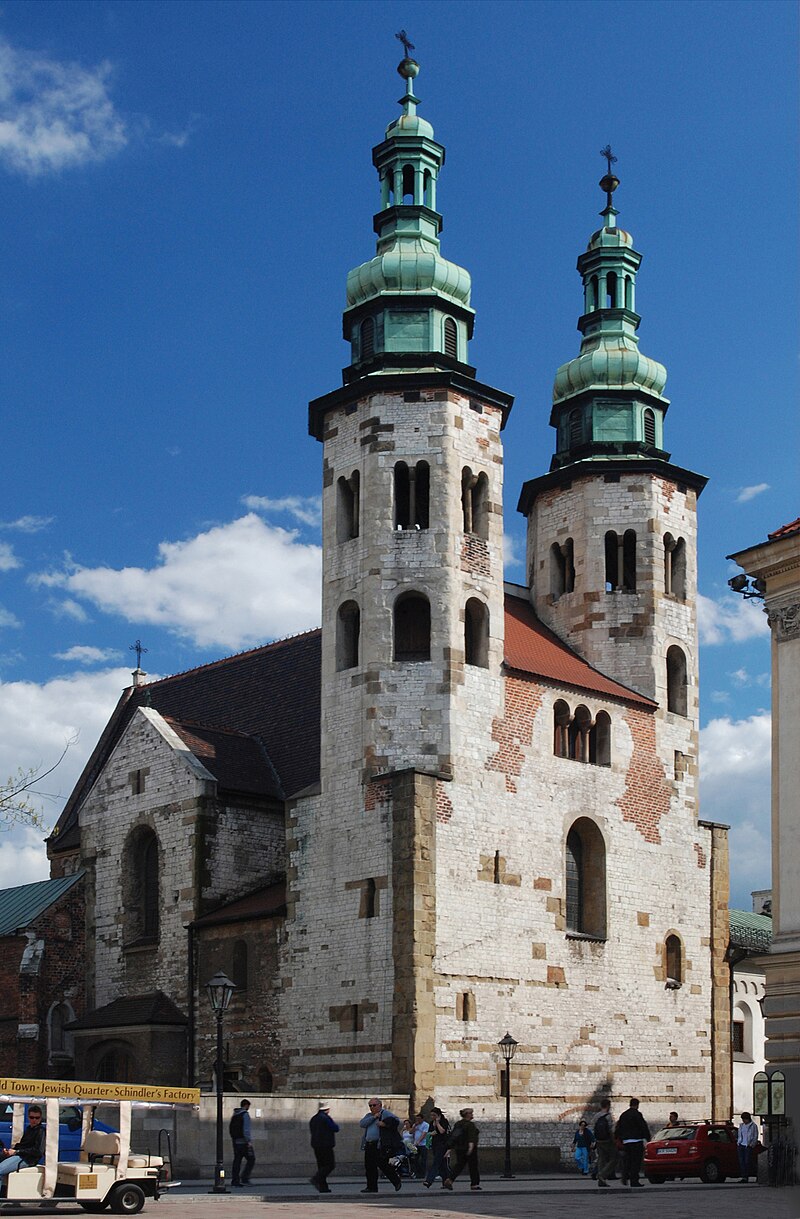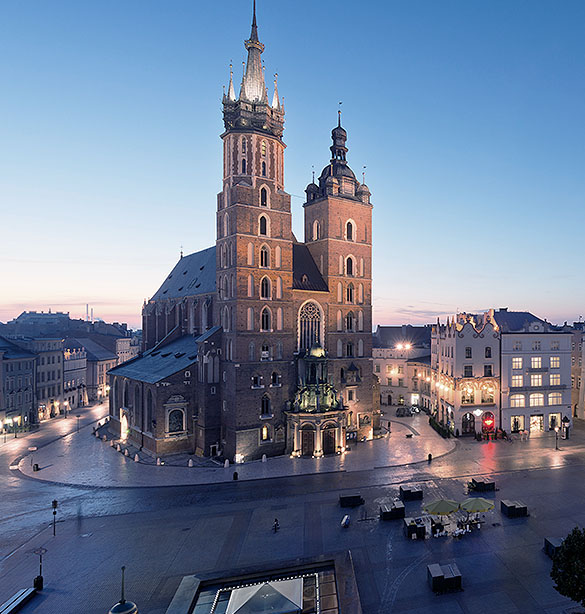 Bryła kościoła
Bryła kościoła
Głównym elementem fasady kościoła Mariackiego są dwie różnej wysokości wieże ściskające pomiędzy sobą późnobarokową kruchtę. Wieżę wyższą, tak zwaną Hejnalicę, 81-metrową, przykrywa gotycki hełm wykonany w 1478 r. przez Macieja Heringha, z szesnastoma pstrymi wieżyczkami i złotą koroną. Wieża ta od dawien dawna była własnością gminy i pełniła funkcje miejskiej strażnicy, z której wypatrywano zbliżających się do miasta nieprzyjaciół. Z niej właśnie rozbrzmiewa na cztery strony świata wygrywany co godzinę na trąbce hejnał mariacki.
Wieża niższa, licząca 69 m, która pełniła niegdyś rolę dzwonnicy kościelnej, skrywa dzwon Półzygmunt, pochodzący z 1438 r. Na zewnątrz, od frontu wisi pod daszkiem nieduża sygnaturka – „dzwonek za konających” – wykonana w 1736 r., która obwieszczała czyjąś śmierć. W 1592 r. niższą wieżę ozdobiono późnorenesansowym hełmem w kształcie eliptycznej kopuły otoczonej czterema mniejszymi kopułkami, zakończonej ażurową latarnią.
Z kamiennego uścisku dwóch wież wysuwa swoją lekką konstrukcję kruchta – XVIII-wieczne dzieło Francesco Placidiego – naśladująca architekturę Grobu Chrystusa w Jerozolimie. Nad nią widać wielkie ostro-łukowe okno. W bryle świątyni Mariackiej przeważa cegła, miejscami rozjaśniona detalami z jasnego kamienia. Na odcinku zewnętrznych ścian nawy głównej, gdzie pomiędzy skarpami dodano kaplice boczne, budowla mocno trzyma się ziemi, lecz na wysokości prezbiterium ściany wyzwalają się z tej przysadzistości, aby już bez skrępowania wystrzelić gotycką smukłością. W górnych partiach, w okolicach gzymsów można dostrzec niezliczone detale: wieżyczki, fantazyjne maszkarony, rzeźby na wspornikach i konsolach i oczywiście nieodłączne gołębie obsiadające wszystko, o co zahaczą ich pazurki. Warto obejść kościół dookoła, aby obejrzeć przymocowane do południowej ściany kuny zabytek średniowiecznego wymiaru sprawiedliwości i zegar słoneczny skonstruowany w 1682 r.
Łaciński napis pod tarczą głosi: „Dni nasze jako cień na ziemi, a nie masz żadnego przedłużenia”. Od strony północnej umieszczono tablicę z brązu poświęconą Janowi III Sobieskiemu oraz obraz Matki Boskiej Łaskawej (nad drzwiami wejścia północnego) ufundowany w 1709 r. jako wyraz wdzięczności po wygaśnięciu zarazy.
Melodia hejnału zresztą bardzo prosta, bo oparta na pięciu dźwiękach, urywa się nagle w pół taktu ostatniej frazy. Ta tradycja nawiązuje do legendy z czasów najazdów tatarskich, kiedy to strażnik, chcąc ostrzec krakowian przed zbliżającymi się najeźdźcami, zaczął grać hejnał, ale w połowie melodii tatarska strzała ugodziła go w gardło. W dawnych czasach oprócz hejnału wygrywano codziennie cztery lub pięć pieśni kościelnych.
Przez kilkadziesiąt lat na przełomie XVIII i XIX w. hejnału nie grano z powodu braku funduszy na opłacenie hejnalisty. Szczodrobliwość małżonków Tomasza i Julianny Krzyżanowskich pozwoliła w 1810 r. na przywrócenie tradycji, zaś od 1927 r. codziennie w południe hejnał mariacki transmitowany jest przez Polskie Radio.
